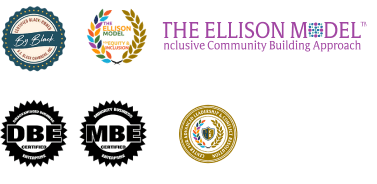
If the world is constantly impacted by problems or conflict, living a solution-oriented life becomes an intentional, ongoing process.
CDG defines problems as circumstances that temporarily block or challenge the achievement of a goal. Problems, regardless of their scale, often arise when objectives, methods, or attitudes between individuals or groups are misaligned with their relationships—whether with others or within themselves. While some problems are complex and require layered solutions to reach alignment, it is important to recognize that not all problems constitute conflict. We define conflict as the use of a problem as a gateway to demonstrate disparaging or prejudiced attitudes and behaviors toward others, especially when these individuals hold diverse perspectives. Conflict emerges when people respond to a problem by negatively invoking aspects of their identity as a justification. Though problems may arise daily, it is ultimately the disposition of the heart—our intention and approach in solving them—that determines whether a situation becomes conflict.

Conflict is inevitable whenever an individual’s inner disposition misaligns with values of inclusion, multicultural appreciation, mentorship, conflict resolution, and relationship building. Such conflicts can escalate from minor misunderstandings to significant injustices that damage community cohesion and disrupt shared goals, methods, and attitudes. At this critical point, there is a need to restore balance and promote peace, understanding, and inclusion to re-establish harmony.
This is why embodying the right mindset and sense of purpose—right person, right place, right time—is essential in the 21st century. An inclusive, community-building attitude is transformative. Personal growth and emergence happen over time, through each circumstance. Every situation presents an opportunity to act with honor, trust, and respect, reflecting an inclusive spirit as a practitioner of The Ellison Model. While the results may not be immediately visible in your sphere of influence, maintaining a respectful, trust-building attitude lays the groundwork for lasting relationships and resilient communities.
When individuals with unresolved internal conflicts come together, the natural outcome is often further discord. Conflict may arise within the group and lead to decisions that ostracize or marginalize others. By addressing internal alignment, individuals contribute to building healthier group dynamics, preventing conflicts from escalating, and fostering environments where all members feel valued.

Leadership is found in your being and doing.
Effective leadership results in growth and development for individuals and communities. It can be seen as maintaining a progressive mindset. Progress invigorates the human spirit and makes us feel alive. It is movement, action, and interaction that bring about a sense of accomplishment. In progress, we find ambition, creativity, innovation, and, most importantly, solutions. We measure success by progress.
Effective leadership results in growth and development for individuals and communities. It can be seen as maintaining a progressive mindset. Progress invigorates the human spirit and makes us feel alive. It is movement, action, and interaction that bring about a sense of accomplishment. In progress, we find ambition, creativity, innovation, and, most importantly, solutions. We measure success by progress.

On the other hand, stagnation is demotivating and unfulfilling. Stagnation attempts to kill the drive to learn, innovate, and solve. Stagnation in an individual’s life causes a reaction of flight (running from the challenge) or fight (engaging in the process to overcome and grow to the next level). This reminds me of the adage, “You don’t go through, you grow through.” Most individuals desire progress over stagnation (life over death), even in their most stagnate position, by taking leadership or expecting those in leadership positions to help move them forward. If not, hopes, dreams, and promises diminish (or die) for individuals and their communities. What is important about the need to survive is ensuring that an inclusive community building approach, and not just personal gain, motivates the individual toward progress.
Leadership is a conglomerate of skills set in motion to fulfill a goal or purpose. What leadership does is effectively execute any of these skills at the appropriate time. These skills include effective written and verbal communication, taking initiative, organizing, time management, negotiating, analyzing, synthesizing, delegating, being proficient with technology, actively listening, problem-solving, having intellectual and emotional intelligence, envisioning, modeling, and many more skills deemed necessary to survive. Leaders become leaders by building the capacity of the leadership organism in them through a relationship with the conglomerate of leadership skills. By performing these skills (or doing), we view the person as a leader. This brings us to what leaders ultimately do:

This is the updated pages indicating our three main development focus areas and one additional page for the industries served.

We are dedicated to building inclusive workplaces where diversity is celebrated and equity is ensured.

Our focus is on optimizing the employee experience to enhance engagement and performance.
